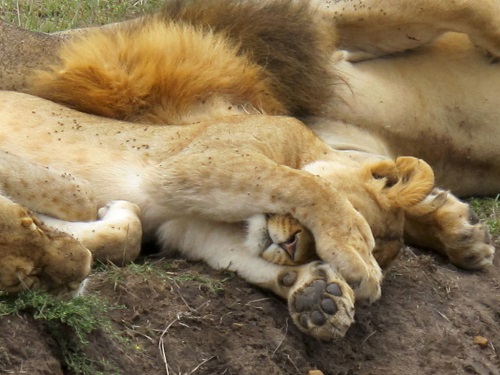 When you search the scientific names of the lion subspecies that we recently listed, you may see that are the same as extinct species. We wanted to acknowledge the questions we’ve received around this and explain why this is the case. First, Some Background: When it comes to listing a species as endangered or threatened, we rely on the best available scientific information.
When you search the scientific names of the lion subspecies that we recently listed, you may see that are the same as extinct species. We wanted to acknowledge the questions we’ve received around this and explain why this is the case. First, Some Background: When it comes to listing a species as endangered or threatened, we rely on the best available scientific information.

In the proposed rule, we addressed the scientific community’s review of lion taxonomy, but at that time of the proposed rule it had not been resolved. At that time, the International Union of Conservation of Nature (IUCN) Species Survival Commission Cat Specialist Group commissioned a Cat Classification Task Force from among its experts to determine a consensus on the taxonomy.
The results of the IUCN review is reflected in our final rule. Namely, the Fish and Wildlife Service accepts the IUCN’s two subspecies taxonomy for Panthera leo (lion): Panthera leo leo for the central, western and Indian populations of lion and Panthera leo melanochaita for the southern and eastern populations of lion.
Why It Seems Weird: You’ve Done Your Research, But the Sites Aren’t Up to Date
With the recent lion ruling, there has been some confusion around whether the subspecies we have listed are extinct. This is likely because when people Googled or searched the scientific names they were sent to results that only showcased extinct lions. But this information will be updated as the scientific community catches up to recent studies.
It’s largely because the proposed taxonomic change just recently came out, that all of the links that are being shared around are not up to date. It was a recent assessment that IUCN did that altered the distinction between lions:
“In June 2015, after the close of the comment period on our proposed rule, IUCN posted an updated Red List Assessment for lion. In this assessment, a new two-subspecies classification is proposed based on the recommendation of the IUCN Cat Classification Task Force: P. l. leo of Asia (India) and western, central, and northern Africa, and P. l. melanochaita for southern and eastern Africa (Bauer et al. 2015a, unpaginated) (Figure 1), which is supported by Barnett et al. (2014, p. 6), Dubachet al. (2013, p. 746), Bertola et al. (2011, entire), Antunes et al. (2008, entire), and Barnett et al. (2006a, pp. 511–512).”
Couple of Facts:
-
There are only two subspecies of lions. And as of January 22nd they will all be listed. We called the two subspecies out to be thorough, but for all who are wondering, all lions are now listed.
-
All Panthera leo, which includes its only two subspecies (P. l. leo and P. l. melanochaita) are listed under the Endangered Species Act. There are no other subspecies of Panthera leo.
-
It may take some time for the scientific community to adopt this taxonomy and start using these names. Keep an eye on this link or download the PDF for more information.
Additional Questions:
What is different between the proposed and final rule to list lions?
The Service received new information from the International Union for Conservation of Nature (IUCN) that the western and central populations of lions are genetically closely related to the currently endangered Asiatic lion (formerly the endangered Panthera leo persica), and the IUCN has named this subspecies Panthera leo leo. The IUCN also found that the southern and eastern populations of lions are now their own subspecies, Panthera leo melanochaita. The Service has determined the two subspecies of lion qualify for different statuses under the ESA.
What’s going on with Panthera leo persica?
Currently, the Asiatic lion (P. l. persica) is listed as an endangered species under the Act. Based on the new taxonomic classification for lions, we are revising the List of Endangered and Threatened Wildlife at 50 CFR 17.11(h). In the Regulation Promulgation section of this document, we implement a taxonomic change by removing the invalid subspecies P. l. persica. This entity is now included in the assessment of the lion species (P. leo).
We know it’s a long document, but if you’re really curious about what we’re doing behind it, we recommend you read this.
More Sources About the Recent Lion Listing:
More specific information:
- IUCN Lion Information: http://www.iucnredlist.org/details/15951/0
- Federal Register Notice: http://1.usa.gov/1QJrsya
- PDF Discussing the Ruling
- Frequently Asked Questions For Listing the Lions
- Director’s Video About Listing Lions
